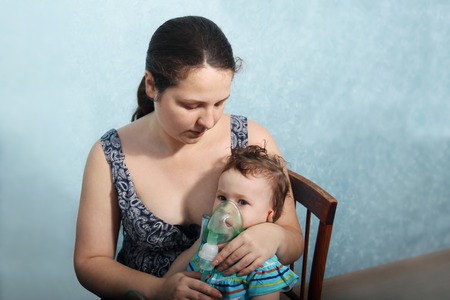What is Sensory Processing Disorder?
Sensory Processing Disorder, often called SPD, is a condition where the brain has trouble receiving and responding to information that comes in through the senses. For children growing up in the United States, SPD can shape the way they experience everything from a noisy school cafeteria to a family trip to the park. Kids with SPD might react more strongly—or sometimes less—to things like bright lights, loud sounds, certain textures, or even smells and tastes. This isnt just about being “picky” or “sensitive”; its how their nervous system interprets sensory messages.
The signs of SPD can be different for every child. Some may cover their ears when a fire truck goes by, struggle with clothing tags, or avoid playground equipment that other kids love. Others may crave movement and touch—constantly running, jumping, or seeking hugs. In American homes and schools, these challenges can impact daily routines: getting dressed in the morning, focusing in class, or joining friends at birthday parties. Recognizing these patterns early helps families and teachers support kids with warmth and understanding as they navigate a world full of sights, sounds, and sensations.
2. How SPD Affects Children and Families
When a child has Sensory Processing Disorder (SPD), their world can feel overwhelming and unpredictable. Everyday experiences—like the sound of a school bell, the texture of clothing tags, or the touch of a friend’s hand—might cause strong reactions that are hard for others to understand. This isn’t just challenging for the child; it touches every part of family life, often in ways that are both visible and invisible.
Children with SPD may react to sensory input in ways that seem unusual or unexpected. Some might cover their ears during lunchtime at school because the noise feels unbearable. Others could avoid playgrounds, feeling anxious about swings or slides. These behaviors aren’t simply “acting out”—they’re genuine responses to how their brains interpret sensory information.
At home, parents and siblings often find themselves navigating these daily challenges. Family routines might be disrupted by meltdowns triggered by bath time or mealtime textures. Outings, birthday parties, or even grocery shopping can become stressful events. It’s common for families to feel isolated, especially if friends or relatives don’t fully understand what SPD is or why certain accommodations are necessary.
Common Challenges Faced at Home and School
| At Home | At School |
|---|---|
| Difficulty with grooming (hair brushing, teeth brushing) | Trouble focusing in noisy classrooms |
| Sensitivity to clothing fabrics or food textures | Avoidance of group activities or physical education |
| Meltdowns during transitions (bedtime, leaving the house) | Overreacting to light touch from classmates |
| Challenges with family gatherings or loud environments | Difficulties following instructions due to sensory overload |
The impact of SPD goes beyond the individual child; it influences relationships within the whole family. Parents often become advocates and detectives—learning to spot triggers, adjusting routines, and seeking support from therapists or teachers. Siblings may need extra attention and understanding as they adapt to changes in family dynamics.
If you’re walking this journey with your child, know that you’re not alone. Many families face similar struggles, and with empathy, patience, and the right strategies—including supportive activities—you can help your child thrive while nurturing loving bonds within your family.

3. Recognizing the Signs: What Parents Should Know
As parents, its natural to want the best for your child and to understand their unique needs. Sensory Processing Disorder (SPD) can sometimes be tricky to recognize, especially because every child has their own quirks and preferences. However, there are some common signs that may help you spot possible sensory challenges early on, and knowing what to look for can make a world of difference.
Children with SPD might react more strongly than expected to everyday experiences. For example, you may notice your child covering their ears at birthday parties or during school assemblies—not just when it’s loud, but even with normal background noise. Some kids find certain clothing textures unbearable, like tags or seams in socks, while others might avoid playing in sandboxes or finger-painting because the feeling is overwhelming.
On the flip side, some children crave more sensory input and might seek out intense movement—like spinning on the playground merry-go-round for longer than their peers or jumping repeatedly on a trampoline. At home, they may slam doors or crash into furniture just for the extra sensation. These behaviors aren’t “bad” or “misbehaving”—they’re ways your child is trying to feel comfortable in their own body.
Social situations can also highlight sensory differences. If your child becomes anxious or withdrawn in busy places like grocery stores or family gatherings, it could be due to sensory overload rather than shyness. Difficulty focusing in class, frustration with routine tasks like brushing teeth, or extreme pickiness about food textures are also common signs parents notice here in America.
Remember, every child is different, and having one or two of these traits doesn’t necessarily mean your child has SPD. But if you notice several of these patterns affecting daily life—especially across settings like home, school, and play—it’s worth gently exploring further. As a parent, your observations are incredibly valuable. Trust your instincts and know that recognizing these signs is the first step toward helping your child thrive.
4. The Power of Play and Activities for Sensory Integration
For children with Sensory Processing Disorder (SPD), play isn’t just about having fun—it’s a powerful way to nurture sensory integration and support their development. Purposeful activities, especially those woven into the fabric of daily family life, can gently guide children through their sensory challenges while building confidence and connection.
Everyday American routines offer countless opportunities for sensory-rich play. Think about simple moments like making pancakes together on a Saturday morning, gardening in the backyard, or visiting the neighborhood playground after school. These experiences aren’t just enjoyable—they help children engage all their senses in a safe, loving environment.
Engaging Activities for Sensory Integration
| Activity | Sensory Benefits | How to Incorporate at Home |
|---|---|---|
| Baking Cookies | Touch (dough), Smell (ingredients), Taste, Coordination | Let your child pour, mix, and shape dough; talk about textures and smells together |
| Sidewalk Chalk Art | Visual input, Fine motor skills, Tactile stimulation | Draw together on the driveway or sidewalk; encourage creativity and movement |
| Nature Walks | Auditory (birds), Visual (nature), Proprioception (walking) | Explore local parks or trails; collect leaves or rocks and discuss what you see and hear |
| Swinging at the Park | Vestibular input, Balance, Social interaction | Visit a playground; take turns on swings and slides, cheering each other on |
| Dancing to Music | Auditory processing, Rhythm, Gross motor movement | Have spontaneous dance parties at home; let your child pick favorite songs |
The Heart of Everyday Play
The beauty of these activities lies in their simplicity and the joyful connections they foster. When parents approach play with intention—focusing on what feels good for their child’s senses—they create a safe space where kids can explore at their own pace. Remember, it’s not about perfection or performance; it’s about being present together.
Nurturing Through Togetherness
By choosing playful activities that meet your child where they are, you’re not just supporting sensory integration—you’re strengthening your bond as a family. Whether you’re giggling over flour-covered hands or marveling at chalk masterpieces under the summer sun, these shared moments become lasting memories filled with love and understanding.
5. Practical Tips for Everyday Life
Supporting a child with Sensory Processing Disorder (SPD) doesn’t have to be overwhelming—in fact, simple routines and small changes can make a big difference. Here are some practical, down-to-earth ideas you can try at home and out in your community to help your child feel more comfortable, regulated, and connected as a family.
Create Predictable Routines
Children with SPD often thrive on predictability. Establish consistent routines for morning, after school, and bedtime. Visual schedules or checklists can help your child know what to expect next, reducing anxiety and helping them prepare for transitions.
Build Sensory-Friendly Spaces
Consider setting up a quiet corner or cozy nook at home where your child can retreat when they need a sensory break. Fill it with soft pillows, weighted blankets, or calming lights. Involve your child in choosing items that make them feel safe and calm.
Include Sensory Activities in Daily Life
Sensory regulation doesn’t always require special equipment. Encourage activities like jumping on a trampoline, swinging at the park, playing with playdough, or walking barefoot on grass. These everyday experiences provide valuable input and can be shared as family fun.
Plan Community Outings Thoughtfully
Before heading out, talk through what your child might encounter—noises at the grocery store or crowds at the playground. Bring along comfort items like headphones or fidget toys. Start with short trips and gradually build up to longer outings as your child becomes more comfortable.
Practice Patience and Celebrate Progress
Remember, every child’s sensory needs are unique. What works one day may not work the next—and that’s okay. Celebrate small victories together and focus on creating positive moments of connection as a family. Your understanding and support go a long way in helping your child feel loved and capable.
6. When to Seek Additional Support
As a parent, you know your child best. Trusting your instincts is one of the most powerful tools you have when it comes to supporting your child with Sensory Processing Disorder (SPD). Sometimes, even with all your love and creative activities, you might notice that your little one continues to struggle in daily life—perhaps they’re overwhelmed in noisy places, have persistent trouble with clothing textures, or find it difficult to join group activities at school or playdates. If these challenges are starting to affect their happiness, confidence, or family routines, it may be time to consider reaching out for extra support.
Listening to Your Parental Intuition
If something doesn’t feel right or if progress seems slower than expected, it’s okay to seek help. You’re not alone—many families walk this path and find comfort in connecting with professionals who understand sensory needs.
When Should You Reach Out?
- Daily Life is Impacted: If sensory difficulties are interfering with eating, sleeping, playing, or learning.
- Emotional Well-being: If your child seems unusually anxious, frustrated, withdrawn, or overwhelmed by everyday experiences.
- You Feel Stuck: If you’ve tried different strategies at home but aren’t seeing positive changes.
How to Find Professional Guidance
An occupational therapist (OT) with experience in sensory integration can offer invaluable support and tailored strategies for your child. Your pediatrician can provide referrals and guidance on where to start. In the United States, you can also connect with organizations such as:
- STAR Institute for Sensory Processing
- American Occupational Therapy Association (AOTA)
- Autism Speaks: Sensory Issues Resources
- Your local Early Intervention program (for children under 3), available through each state’s health department
Remember, Seeking Help is a Strength
No one has all the answers on their own. By reaching out for professional advice and resources, you’re giving your child the best chance to thrive—and showing them that it’s always okay to ask for help when we need it. Together with caring experts and supportive communities, you’ll find new ways to nurture your child’s unique strengths and bring more joy into everyday moments.


